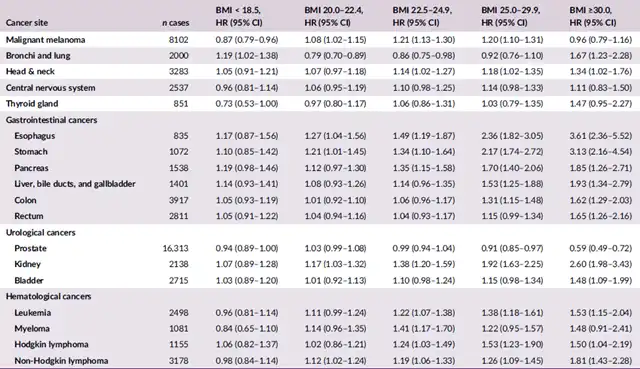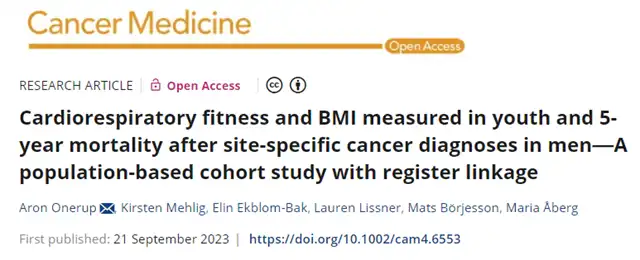Being Overweight Increases the Risk of 17 Types of Cancer and Higher Mortality
- Normal Liver Cells Found to Promote Cancer Metastasis to the Liver
- Nearly 80% Complete Remission: Breakthrough in ADC Anti-Tumor Treatment
- Vaccination Against Common Diseases May Prevent Dementia!
- New Alzheimer’s Disease (AD) Diagnosis and Staging Criteria
- Breakthrough in Alzheimer’s Disease: New Nasal Spray Halts Cognitive Decline by Targeting Toxic Protein
- Can the Tap Water at the Paris Olympics be Drunk Directly?
Being Overweight Increases the Risk of 17 Types of Cancer and Higher Mortality
- Should China be held legally responsible for the US’s $18 trillion COVID losses?
- CT Radiation Exposure Linked to Blood Cancer in Children and Adolescents
- FDA has mandated a top-level black box warning for all marketed CAR-T therapies
- Can people with high blood pressure eat peanuts?
- What is the difference between dopamine and dobutamine?
- How long can the patient live after heart stent surgery?
Being Overweight Increases the Risk of 17 Types of Cancer and Higher Mortality
Obesity is one of the ten major chronic diseases identified by the World Health Organization. Worldwide, 1.9 billion adults are overweight, and 600 million are obese. In China, the number of overweight and obese individuals has surpassed 300 million. Therefore, obesity and related diseases have become a significant global health concern, with an increasing incidence.
Obesity is not only a characteristic but also a disease. It has become a global epidemic, with obese individuals being more prone to diabetes, cardiovascular diseases, chronic kidney disease, and even various types of cancer.
China, while not having the highest proportion of obese individuals, has the most significant population of obese people globally due to its large population base.
On November 6, 2023, researchers from Sweden’s University of Gothenburg published a study titled “Associations between BMI in youth and site-specific cancer in men—A cohort study with register linkage” in the “Obesity” journal.
The study reveals that being overweight during youth increases the risk of developing 17 different types of cancer later in life, including lung cancer, head and neck cancer, brain cancer, thyroid cancer, esophageal cancer, gastric cancer, pancreatic cancer, liver cancer, colorectal cancer, rectal cancer, kidney cancer, bladder cancer, melanoma, leukemia, multiple myeloma, Hodgkin’s lymphoma, and non-Hodgkin’s lymphoma.

BMI, or Body Mass Index, is the widely used international standard for measuring body weight and assessing one’s health. BMI is calculated by dividing weight by the square of height. A BMI between 18.5 and 25 is considered normal, while a BMI over 25 is considered overweight, and over 30 is classified as obese.
It’s worth noting that China’s BMI standards slightly differ from those in the United States, with a BMI range of 18.5-23.9 considered normal in China, over 24 as overweight, and over 28 as obese.
In this study, researchers analyzed 1,489,115 male participants from the Swedish military registration database, with an average age of 18 at baseline. They calculated the BMI based on the participants’ height and weight and categorized them into three groups: underweight (BMI < 18.5), overweight (25-29.9), and obese (≥30). They then analyzed the relationship between BMI in young men and site-specific cancers.
During an average 31-year study period, a total of 78,217 individuals developed cancer.
The research found that young men who were overweight or obese at age 18 had a higher risk of developing 17 different types of cancer in their later lives.

Relationship between BMI and site-specific cancer incidence
For abdominal cancers, including esophageal cancer, gastric cancer, and kidney cancer, obesity was strongly associated with a higher risk, with a 3.61-fold, 3.13-fold, and 2.6-fold increase in cancer risk, respectively.
Even for head and neck cancer, esophageal cancer, gastric cancer, pancreatic cancer, liver cancer, kidney cancer, and melanoma, the risk of cancer increased, even with a BMI in the 20-22.4 range.
Researchers concluded that being overweight or obese during youth may increase the risk of cancer. Unhealthy body weight is linked to almost every type of cancer in various organs. Given the concerning trend of childhood and adolescent obesity, this study emphasizes the importance of maintaining a healthy weight.
Furthermore, on September 21, 2023, researchers from the University of Gothenburg in Sweden published a study titled “Cardiorespiratory fitness and BMI measured in youth and 5-year mortality after site-specific cancer diagnoses in men—A population-based cohort study with register linkage” in the “Cancer Medicine” journal.
The study analyzed Swedish military registration data and discussed the survival rates of individuals with different BMIs after cancer diagnoses.
The research found that the higher the BMI, the higher the mortality rate after a cancer diagnosis. Overweight or obese men had a 2-3 times higher likelihood of dying within five years of being diagnosed with skin cancer, Hodgkin’s lymphoma, thyroid cancer, bladder cancer, and cancer. The likelihood of dying from head and neck cancer, rectal cancer, and kidney cancer was 1.4-2 times higher.

In conclusion, these two studies demonstrate that being overweight during youth increases the risk of developing various cancers later in life, and the risk of mortality after a cancer diagnosis is higher for those who are overweight or obese. This emphasizes the importance of maintaining a healthy body weight.
Links to the research papers:
Being Overweight Increases the Risk of 17 Types of Cancer and Higher Mortality
(source:internet, reference only)
Disclaimer of medicaltrend.org
Important Note: The information provided is for informational purposes only and should not be considered as medical advice.



